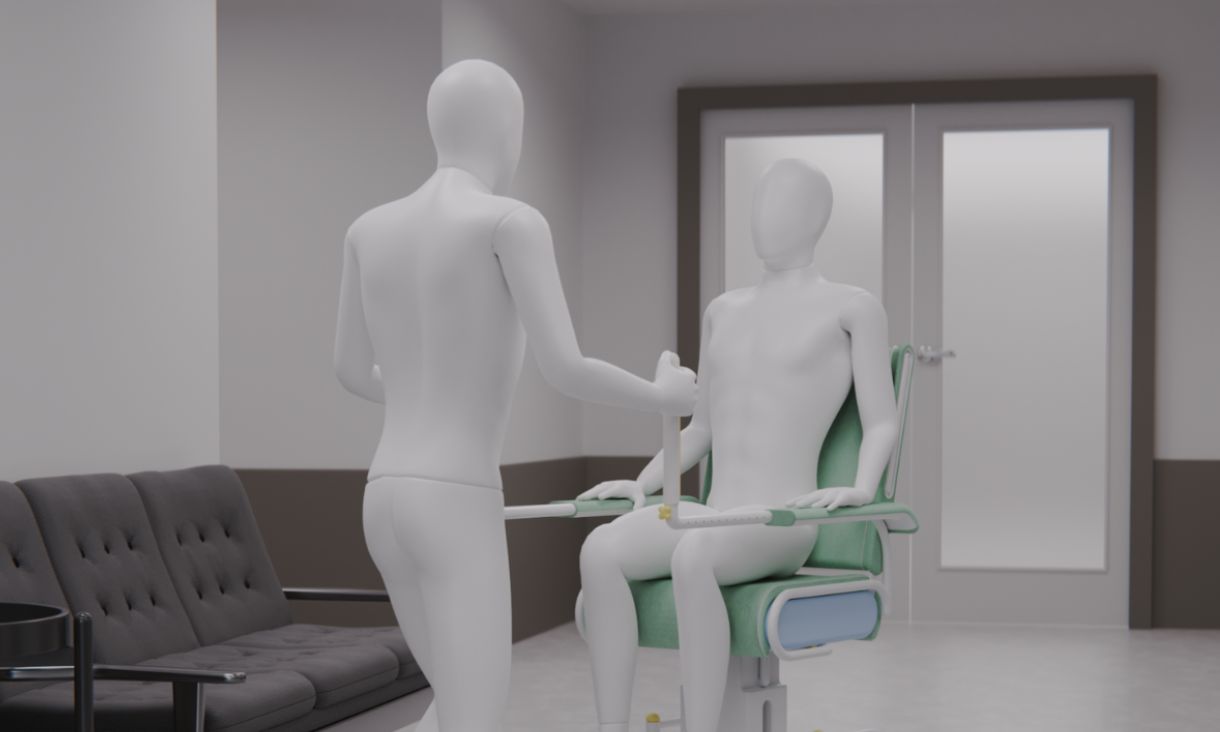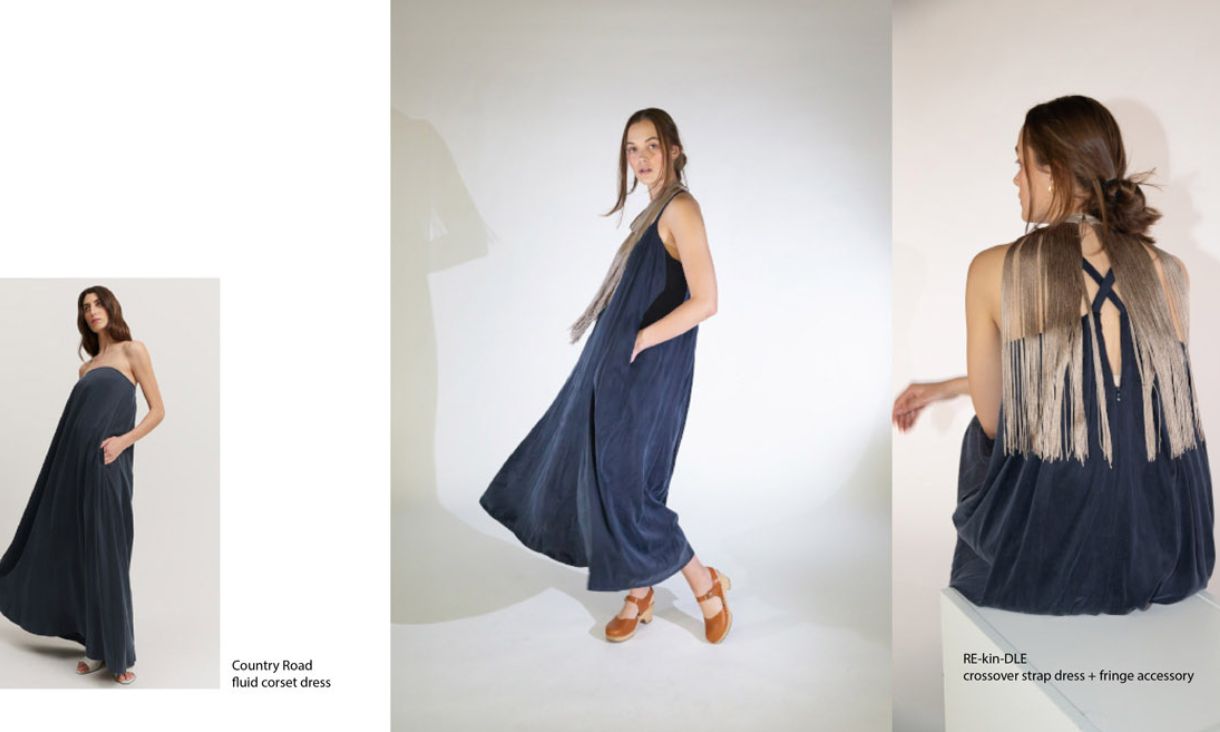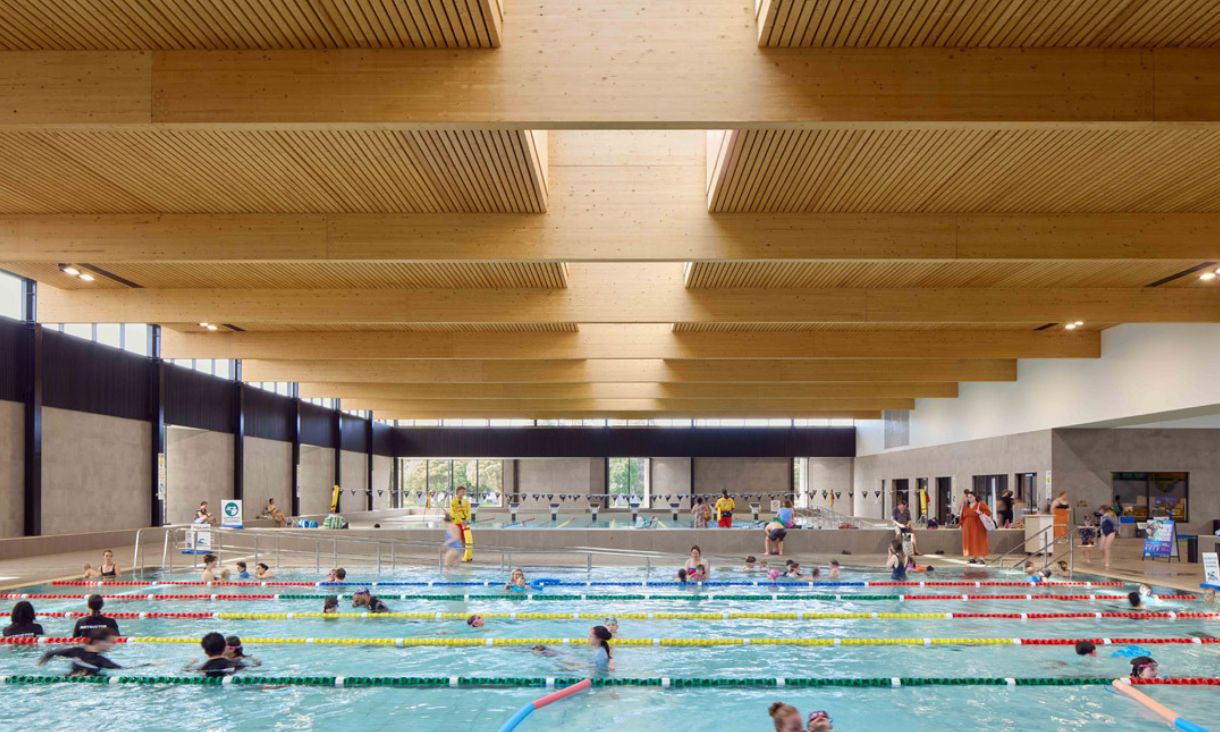On track to achieve 6 Star Green Star, this state-of-the-art 8,100m2 centre includes an indoor learn-to-swim pool, 25m lap pool, kids splash park, warm water pool with sauna and steam rooms, a café, separate spaces for group exercise, and a 50m outdoor pool.
The new NARC has made exercise, connection and wellbeing accessible to a much larger cohort of the community – with participation already tripled through increased facilities and programmes.
RMIT Alumni Megan Marks and Miranda Barrett are also part of Warren and Mahoney.
RMIT’s further success
RMIT students, staff and alumni were also recognised as finalists across a range of categories.
Professor Tim Marshall, Deputy Vice-Chancellor Design and Social Context and Vice-President, said the recognition reflected RMIT’s position as a leader in design.
“It’s fantastic to see such incredible results from our RMIT staff, students and alumni,” he said
“This success displays how RMIT is at the forefront of design in both education and industry, connecting the two across our multitude of disciplines to deliver expectational results for our students and for the communities we serve.”
Communication design
RMIT University Communication Design Field Guide developed by Sandwich Press, RMIT’s School of Design: Communication Design, Shuai Shao, Jiayu Cheng, Ruiying Zeng and Dr Nicola St Joh. A resource designed to motivate students to feel seen and empowered as diverse creatives.
My Brunswick, Our Brunswick developed by Georgina Nolan is the culmination of a research project conducted by RMIT’s hyperlocal research lab ’PlaceLab’. It synthesises a mosaic of diverse narratives, capturing a spectrum of perspectives, sentiments, and insights that delve into the collective identity and unique character of the Brunswick community.
Product design
Cliterate developed by RMIT Industrial Design, Thrive Re-Hab and X-Product. A sex-education tool for health professionals and students to encourage accurate and respectful conversations based on scientific knowledge.
Service design
Improving gender equity within Victorian schools developed by Portable, Huddle and Dr Emily Gray, Senior Lecturer in Education Studies, RMIT University. A project using human-centred design to learn why high-ability girls weren’t applying for selective entry schools.
Student design
RE:CML (2024) developed by RMIT Architecture and Urban Design: Interior Design; Xiaoni Bai and James Carey (Supervisor). This project aims to revitalise Melbourne’s demolished Colonial Mutual Life Building by reinterpreting its essence in a contemporary context.
Rigrowing City developed by RMIT University, School of Architecture and Urban Design; Zhuoran ‘Amanda’ Chen, Zixin Wang, Dr Ding Wen ‘Nic’ Bao (Supervisor). Introduces an innovative approach to repurposing abandoned oil rigs to address global challenges such as climate change, rising sea levels, and ocean pollution.
Otherworldly Expedition: The Sentient City developed by RMIT Architecture and Urban Design: Interior Design; Anh Tran and Dr. Andy Miller (Supervisor). An immersive ecological experience, situated at the home of the Balayang (Grey-headed Flying Fox) at Yarra Bend Park, Kew.
IMITATION developed by RMIT School of Architecture and Urban Design: Interior Design; Xiaoni Bai and Linda Raimondo (Tutor). A New Steiner Kindergarten designed based on Rudolf Steiner’s vision for early childhood education, focusing on development of the ’whole child’.
Architectural design
Seven of the 14 Architectural Design finalists were projects by firms involving RMIT staff and alumni. This includes: The Round, Tarakan Street Social and Affordable Housing, Moondani - Pascoe Vale Primary School, Central Goldfields Art Gallery and Indigenous Interpretive Garden, The Alba, Koorie Heritage Trust Stage 2, 38 Albermarle Street.
Established by the Victorian Government in 1996, the annual Victorian Premier Design Awards underscore the transformative impact of design on contemporary challenges.
Story: Nick Adams








